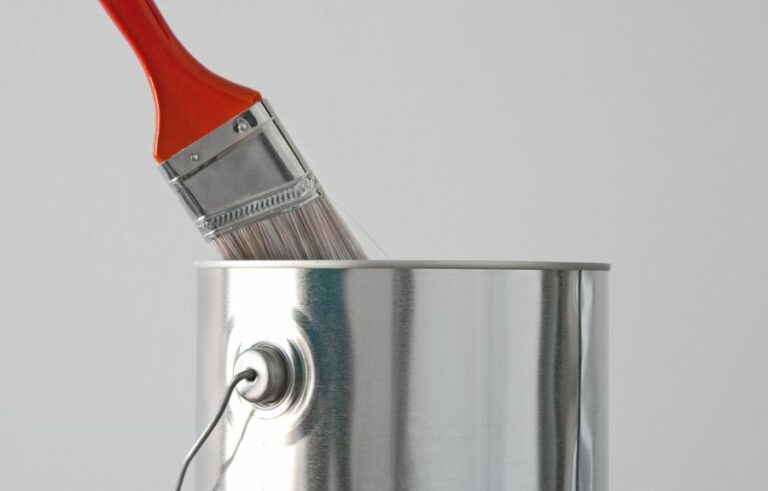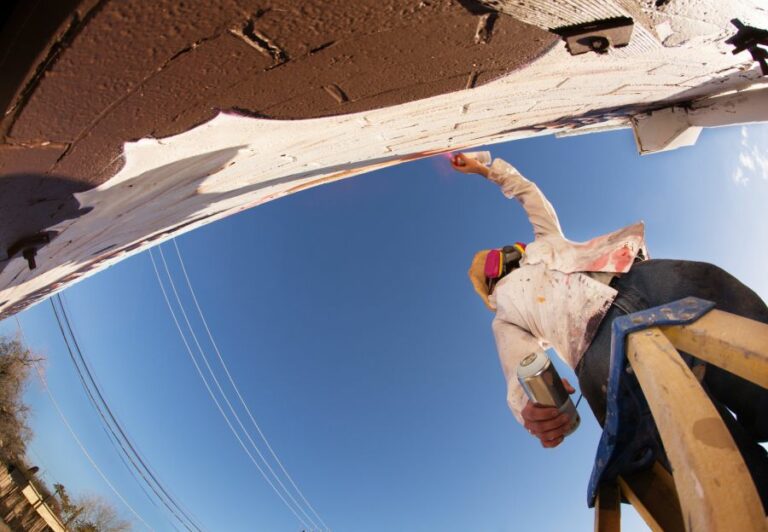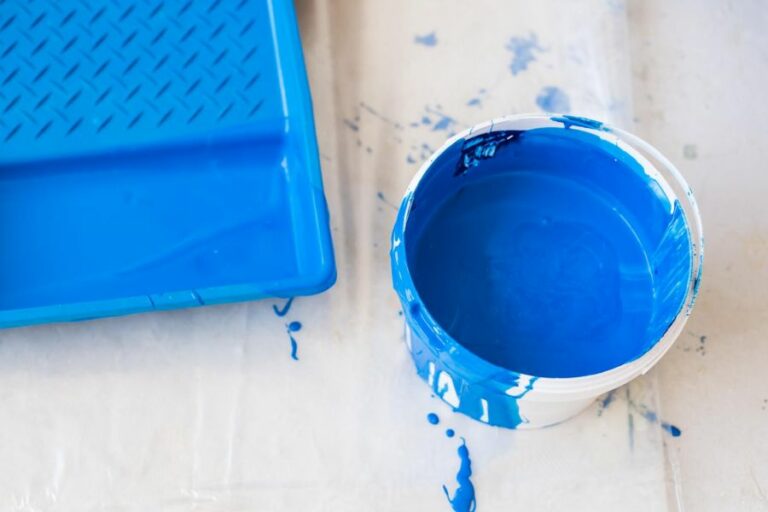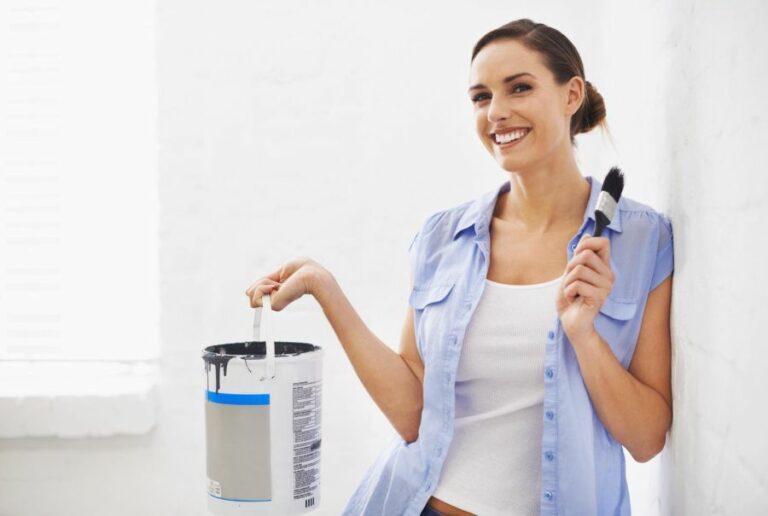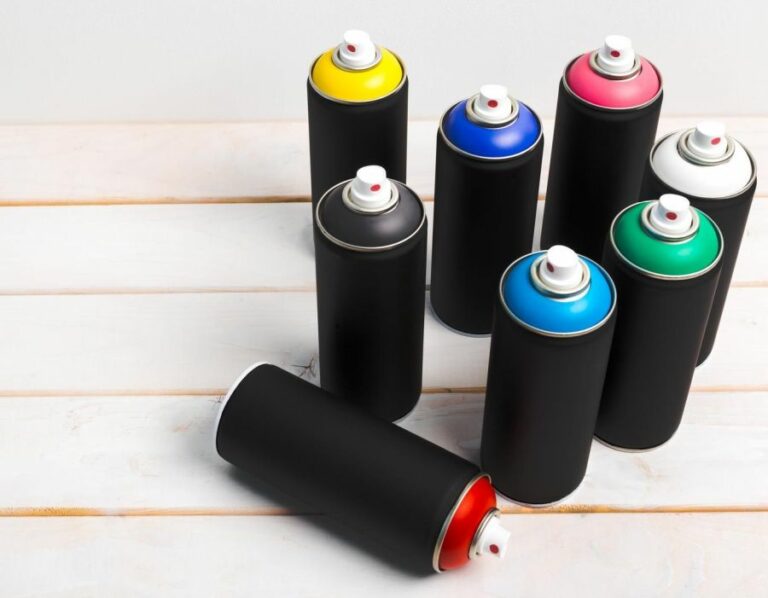What Is Outdoor Paint, 25 Things You Should Know
Discover the world of outdoor paint and learn how to transform your exterior spaces with the right product! In this blog post, we will delve deep into the realm of paints specifically designed for outdoor applications, be it your home’s facade, fences, or garden furniture. We’ll cover the essential factors that define high-quality outdoor paint, such as durability, weather resistance, and adhesion.
What is outdoor paint:
Outdoor paints have three primary categories: acrylic latex, oil-based, and masonry. Choosing the right paint depends on surface material, existing paint, and weather conditions. Enhance the exterior by employing techniques such as monochromatic color schemes, complementary hues, and coherent space integration. Maintain paint longevity by regularly inspecting surfaces, cleaning with mild detergent, repairing blemishes, and repainting every 7-10 years.

Discover the essential characteristics of outdoor paint, designed to withstand various weather conditions and protect your surfaces. Learn the differences between water and oil-based paints, and find out how to select the perfect hue and finish for your next exterior project.
Contents
- 1 Understanding the Characteristics of Exterior Paint
- 2 What Type of Paint is Suitable for Exterior Use?
- 3 Is Special Paint Required for Outdoor Applications?
- 4 What is the Distinction Between Indoor and Outdoor Paint Varieties?
- 4.1 • A Tale of Two Paints: Compositions and Characteristics
- 4.2 • Trajectories of Transformation: Divergent Paint Performance
- 4.3 • An Indoor-Outdoor Dichotomy: Paint Deployment and Detriments
- 4.4 • Conclusion: Matters of Paint Peculiarities and Prudence
- 5 What is the Optimal Paint Choice for Withstanding Outdoor Weather Conditions?
Understanding the Characteristics of Exterior Paint
• Venerable Varieties: An Insight into the Types of Outdoor Paints
Encompassing a myriad of emulsions, outdoor paints boast vast chromatic palettes and diverse functional properties. Three primary categories delineate this labyrinthine landscape.
- Acrylic Latex Paints: As the quintessential choice for exteriors, these stalwart champions of adhesion offer fortitude against elemental onslaughts. With exceptional ultraviolet resistance, they prevent disintegration and discoloration despite constant solar exposure.
- Oil-Based Paints: Celebrated for their superior smoothness, oil-based variants possess a peculiar penchant for self-leveling. Despite the protracted drying period, they boast remarkable endurance and are less susceptible to radical temperature fluctuations.
- Masonry Paints: Specifically fabricated for porous surfaces such as brick, stucco, and concrete, masonry paints achieve equilibrium between breathability and indomitable weather resistance. Versatile and durable, they safeguard against efflorescence, algae, and frost.
• Appraising Applicability: Assessing Substrate Suitability
Choosing the optimum paint necessitates an astute evaluation of the surface in question. Some pivotal factors in determining the ultimate selection include material type, existing paint, and prevailing weather conditions.
– Building Blocks: Substrates and Compatibility
- Timber: Encounter this perennial edifice material, replete with idiosyncratic knots and splits. Opt for a more adhesive paint consisting of a high percentage of resins, ensuring a steadfast bond with the intricate wood grain.
- Metal: Battle corrosion and rust by employing a specialized metal primer before bestowing an oil-based topcoat, thus achieving an impervious shield against the ruthless ravages of time.
- Aluminum: Discover the conundrum that is unpainted aluminum. Applying a self-etching primer imbued with phosphoric acid ensures impeccable adhesion before gracing the surface with a durable acrylic latex finish.
– Weathering the Storm: The Role of Climatic Conditions
Factors such as perpetual precipitation and arid desiccation ultimately inform the choice of outdoor paint. Select moisture-resistant paints in humid environments while opting for versatile acrylic latex paint when faced with extreme temperature ranges.
• Attaining Aesthetic Ascendancy: Techniques to Enhance your Exterior
Grant your exteriors the elusive harmony between functionality and aesthetic appeal by incorporating design concepts anchored in innovative visualization, color theory, and spatial uniformity.
– Visualizing the Vivid: Employing Color Schemes
- Monochromatic: Revel in the subtle elegance of employing a sole shade in varying intensities along the facade of a building.
- Analogous: Engage colors that recline adjacently within the chromatic spectrum and bare witness to dazzling outcomes.
- Complementary: Delve into the chromatic profundity of diabolically opposed hues, and stimulate intrigue with their vibrant juxtaposition.
– Uniformity Unleashed: Coherent Space Integration
Leverage your external hardscapes and landscapes to sustain color cohesion with your paint selections. Ensuring consonance between these irreconcilable realms crafts a seamless visual experience.
• The Conservation Chronology: A Guide to Outdoor Paint Maintenance
Protect the longevity and luster of your outdoor paints with periodic inspection and proactive maintenance regimens.
- Inspection: Examine the surfaces at regular intervals for anomalies such as peeling, chalking, and damp spots.
- Cleaning: Employ a mild detergent solution and gentle pressure washing to liberate your exteriors from accumulated dirt, mildew, and algae.
- Repairs: Tend to blemishes such as cracks and fissures with dedicated exterior fillers or sealants, mitigating further damage.
- Re-painting: Expect to grapple with the arduous task of re-painting every 7-10 years, based on prevalent conditions and paint varieties.
Adorn your exteriors with coatings that exude resilience, sheen, and sophistication. In the mysterious realm of outdoor paints, a deep comprehension of substrates, climatic conditions, and maintenance practices propels one to the pinnacle of architectural excellence.
What Type of Paint is Suitable for Exterior Use?
Venture with us on an odyssey through the lesser-known world of exterior paint selection.
• A Palette of Possibilities: Examining Various Exterior Paint Types
To refurbish the facade of your domicile, an adept selection of fitting paint leads to a harmonious blend of aesthetics and durability. A potpourri of choices abounds; consider the following alternatives.
– Acrylic Latex Paint: The Resilient Polymath
A veritable paragon of versatility, acrylic latex paint offers an array of advantages:
- Adheres effortlessly to various facades
- Resistant to cracking, blistering, and peeling
- Expeditious drying time
Astonishingly, it also provides access to those seeking environmentally benign alternatives, as it emits low volatile organic compounds (VOCs).
– Oil-Based Paint: The Steadfast Sentinel
A stalwart option, oil-based paint has long protected exteriors with its unrivaled resilience:
- Remarkable endurance against inclement weather
- Proficient at repelling water and resisting mold augmentation
- Exceptional longevity, lasting for years despite the elemental barrage
Alas, this tenacious paint is not without its flaws, as it releases higher VOCs than its acrylic counterparts and mandates lengthy drying times.
– Elastomeric Paint: The Impermeable Shield
A redoubtable force, elastomeric paint offers unparalleled protection, yielding a robust finish:
- Formidable resistance to cracks and fissures
- Thwarting of moisture permeation
- Ardent defense against natural adversaries, such as sunlight, precipitation, and temperature changes
Despite these compelling merits, elastomeric paint may present tribulations for those unversed in its application, necessitating professional intervention.
• The Alchemy of Pigmentation: Evaluating Exterior Paint Ingredients
Navigating the esoteric realm of exterior paint components leads to astute formulation discernment. Delve into the intricacies of the following constituents.
– Binders: The Unwavering Anchor
The linchpin of paint’s tenacity, binders fortify adhesion and impart durability:
- Acrylic polymers prove paramount for steadfastness
- Alkyds provide robust, albeit environmentally contentious, support
- Elastomeric resins deliver exceptional flexibility
– Pigments: The Chromatic Artisans
Pigments bestow both color and opacity:
- Prime pigments foster vibrancy and concomitant coverage
- Secondary or extender pigments bolster primary pigment efficacy
- Consider hue resilience, ensuring the retention of chromatic ebullience
– Solvents: The Dissolving Catalysts
Solvents modulate paint viscosity, enabling effectual application:
- Acrylic latex solvents consist primarily of water, a benign choice
- Oil-based solvents, such as mineral spirits, may pose environmental quandaries
– Additives: The Enigmatic Enhancers
Often enshrouded in ambiguity, additives imbue paints with specific attributes:
- Retardants extend drying times for seamless amalgamation
- Biocides impede mildew and algae proliferation
- Dispersants prevent pigments from coalescing
• The Art of Exterior Paint Selection: Tips for Informed Decision-Making
Outlined below are aphorisms to heed whilst embarking on your exterior paint selection escapade:
- Research: Peruse myriad reviews and product specifications to find your ideal paint
- Contextualize: Acknowledge your dwelling’s material and climate, tailoring your decision accordingly
- Finances: Allocate funds appropriately, investing in superior paint as a long-term investment
Whether you espouse acrylic latex, oil-based, or elastomeric paints, a mindful approach to exterior paint selection leads to gratifying results. Give thoughtful consideration to each option’s advantages and drawbacks, and you will undoubtedly choose a hue that affirms your dwelling’s exquisite character.
Type of Paint | Description |
|---|---|
Acrylic Latex Paint | Water-based paint that is durable, weather-resistant, and easy to clean. |
Oil-Based Paint | Provides a durable and long-lasting finish but requires solvents for cleanup. |
Enamel Paint | Hard, glossy finish that is resistant to wear and tear and can be either water-based or oil-based. |
Elastomeric Paint | Thick, flexible paint that covers cracks and imperfections, offering excellent weather resistance. |
Masonry Paint | Specifically formulated for use on brick, stucco, and other masonry surfaces, providing a durable and water-resistant finish. |
Is Special Paint Required for Outdoor Applications?
• Unraveling the Secrets of Exterior Paints
Painting outdoor surfaces introduces a slew of dilemmas that are typically absent in interior projects. Exposure to diverse elements, temperature variations, and relentless sunlight pose formidable challenges that require a tour de force of painting expertise.
This in-depth dive will not only help you uncover whether special paint is necessary for exteriors but also offer essential tips to achieve a splendid and resilient finish.
– Architectural Alchemy: Acquiring Optimal Paint Formulations
Unbeknownst to many, not all paints are suitable for outdoor applications. Exterior paints are specifically formulated to endure inclement weather and resist fading, chipping, and peeling. The distinctions among different paint types might appear trivial at first, but understanding their nuances can save you from a world of trouble.
Water-Based (Acrylic) Paints: Gateway to Venerable Elegance
Acrylic paints, known for their water-soluble characteristics, have become the go-to choice for a plethora of outdoor painting projects. They hold some unique advantages over their oil-based counterparts:
- Swift Drying Time: An accelerated drying process enables rapid completion of painting tasks and averts potential damage caused by sudden rain.
- Low VOC Emission: Environmentally friendly water-based paints release fewer toxic chemicals, creating a salubrious atmosphere around your premises.
- Simplified Cleanup: Cleaning brushes and spills is a breeze, requiring only water and no additional solvents.
Oil-based (Alkyd) Paints: Bastion of Timeless Charm
Although acrylic paints have overshadowed alkyd paints in many aspects, oil-based paints still possess inherent qualities giving them a competitive edge:
- Adhesion Prowess: Their robust bonding abilities ensure a durable and alluring paint film on a medley of surfaces.
- Remarkable Self-Leveling: Producing an ultra-smooth and blemish-free finish, oil-based paints exude a professional motif devoid of brush marks.
Once you have aced the basics of exterior paint formulations, another conundrum emerges: navigating the sheen-level maze. With a dazzling array of finish options, determining the optimal sheen for your project can make heads spin. Fear not. Let us demystify the sheen spectrum:
Flat (Matte): The Modest Enchanter
Flat finishes bestow a subtle charm onto outdoor surfaces by concealing imperfections and minimizing glare. Commonly used on surfaces such as siding and fences, matte paints are lauded for their understated elegance but often lack durability.
Satin: The Beloved Middle Ground
Satin sheen strikes a desirable balance between a low-gloss finish and enhanced durability. Its gentle sheen highlights architectural features while providing ample resistance against mildew and stains, making it an ideal choice for many exterior projects.
Semi-Gloss: The Sturdy Stalwart
As the name suggests, semi-gloss paints have a noticeable sheen that not only creates visual intrigue but also boasts superior durability. Typically reserved for trim work, doors, and windows, these finishes require meticulous surface preparation to avoid emphasizing imperfections.
• Blending Art and Science: Preparing Surfaces for Exterior Paint
No saga of painting mastery would be complete without acknowledging the supreme importance of surface preparation. The finest exterior paint will falter if not accorded a pristine canvas on which to display its full potential.
To ensure the longevity of your paint job, meticulous attention must be paid to the following preparatory steps:
- Scrutinize and Repair: Assess the existing paint film, rectifying any defects such as peeling, chalking, or bubbling.
- Prime the Canvas: Prime surfaces with a high-quality primer, allowing for impeccable adhesion and an extraordinary finish.
- Utilize Proper Techniques: Brush, roller, or spray, whichever method you choose, employ it with finesse and keen attention to detail.
• Eureka! The Verdict on Special Outdoor Paint
From the enlightening discourse above, the answer is unequivocally clear: special paint is indeed an exigency for outdoor surfaces.
While the odyssey of selecting and applying exterior paint may initially appear daunting, heed the wisdom contained herein, and your outdoor painting endeavors will be met with triumphant success.
May your ventures shine with resplendent colors that withstand both the whims of weather and the test of time. Happy painting!
Question | Answer |
|---|---|
Do you need special paint for outdoors? | Yes, it is recommended to use exterior paint specifically designed for outdoor surfaces, as it provides better durability, weather resistance, and protection from UV rays. |
What is the Distinction Between Indoor and Outdoor Paint Varieties?
Paints tailored for various applications can drastically affect the longevity and aesthetics of your living spaces. Understanding the distinctions between indoor and outdoor paints is an essential factor for any painting project.
• A Tale of Two Paints: Compositions and Characteristics
– Indoor Paint – Protective and Polished
Indoor paint, also known as interior paint, is specifically designed for indoor environments. It is formulated with a focus on subtle visual elegance and safeguarding surfaces from daily wear and tear.
Acrylic Acumen – The Polymer Powerhouse
The primary base ingredient in most indoor paints is acrylic, a thermoplastic polymer derived from petrochemicals. This material imparts integrity and suppleness to the paint, ensuring it remains unaffected by fluctuations in temperature and humidity.
Moreover, acrylic provides a robust and stable film, shielding surfaces from stains, dents, and scuffs.
Volatile Organic Compounds: Aromatic Adversaries
Volatile Organic Compounds (VOCs) are chemical substances that vaporize at room temperature. They are commonly found in paints, solvents, and other household chemicals. Regrettably, they are notorious for contributory health complications and environmental impact.
The majority of interior paint formulations today are low-VOC, following stringent regulations that prioritize indoor air quality.
– Outdoor Paint – Resilient and Reliable
Conversely, outdoor paint is engineered to endure the onslaught of extreme weather conditions, sunlight, and other environmental rigors. It is built to provide steadfast protection and durability alongside being visually appealing.
Alkyd Acuity – Tenacious Ties to Surfaces
Most exterior paints employ an alkyd resin base derived from modified vegetable oils or synthetic polymers. This particular resin offers excellent adhesion, ensuring that the paint remains steadfast on a plethora of surfaces.
Furthermore, alkyd-based paints exhibit superior resistance to moisture and abrasion, indispensable attributes for outdoor paint.
Ultraviolet Undertakings – Warding Off Sunlight’s Siege
A crucial component of outdoor paints is ultraviolet (UV) resistant pigments and additives. These compounds absorb or reflect the sun’s harmful rays, hindering paint degradation and discoloration.
By thwarting the onslaught of sunlight, these paints preserve their vivacity and buoyancy for extended durations.
• Trajectories of Transformation: Divergent Paint Performance
– Indoor Paint – Delicate Detailing and Prestige
Indoor paint is finessed for smooth finishes and opulent visual appeal. Its formulation emphasizes effortless application and low odor for a pleasant painting experience. Moreover, indoor paints are available in myriad sheens, allowing for easy customization and effortless touch-ups.
– Outdoor Paint – A Bastion of Durability and Armor
Outdoor paint, in stark contrast, touts resilience as paramount. Designed to withstand nature’s fury, it incorporates additives that prevent fading, peeling, and cracking. Consequently, these chemical combinations lead to thicker and more viscous paints that require adept application techniques.
While visually captivating, outdoor paints prioritize longevity and protection foremost.
• An Indoor-Outdoor Dichotomy: Paint Deployment and Detriments
– Interior Designs: When Outdoor Paint Ventures Indoors
Utilizing outdoor paint in interior spaces would undoubtedly result in a stalwart protective layer. However, its thicker consistency, noxious fumes, and dearth of low-sheen options can hinder its indoor application.
The increased VOCs also pose a significant risk to health and the environment, making it an unsuitable choice for most indoor projects.
– Exterior Exploits: When Indoor Paint Bravely Battles Outdoors
If interior paint is employed outdoors, its frail resistance to UV exposure, water, and mold will engender swift deterioration. Delicate paint formulations falter in the face of elemental hardships, negating any aesthetic prowess they might have had.
• Conclusion: Matters of Paint Peculiarities and Prudence
In sum, the disparities between indoor and outdoor paint lie in their respective chemistry, performance, and intended usage.
Discerning the nuances of these diverse paints ensures that your painting projects achieve the desired effects while ensuring the durability and allure of your living spaces.
Exercise caution in selecting the appropriate paint, whether seeking the opulence of indoor iterations or the fortitude of their outdoor counterparts.
Aspect | Indoor Paint | Outdoor Paint |
|---|---|---|
Chemical composition | Formulated using ingredients that minimize odors and pollutants. | Formulated using additional chemicals to protect against harsh outdoor conditions. |
Durability | Less durable as they are not exposed to extreme weather conditions. | More durable as they have to withstand sun, rain, wind, and extreme temperatures. |
Resistance to fading and chalking | Less resistant to fading and chalking. | More resistant to fading and chalking due to exposure to UV rays and other elements. |
Mildew resistance | Lower mildew resistance. | Higher mildew resistance due to outdoor exposure to moisture. |
Volatile Organic Compounds (VOCs) | Lower levels of VOCs to minimize odors and pollutants indoors. | May have higher levels of VOCs as they are used outdoors where ventilation is not an issue. |
What is the Optimal Paint Choice for Withstanding Outdoor Weather Conditions?
Outdoors, the volatile elements relentlessly test the mettle of your abode’s external facade. To fortify your dwelling against such adversarial forces, selecting the optimal paint becomes paramount.
This extensive guide delves into the characteristics of the finest exterior paint, ultimately allowing you to adorn and safeguard your home.
• Enduring the Elements: Weather-Proof Formulations
Providing steadfast defense against inclement conditions, weather-resistant paints emerge as the dominant choice for al fresco applications. Cognizant of their multifarious advantages, we dissect the anatomy of such paints.
– Acrylics: Flexible Facade Fortification
The elasticity inherent in acrylic paints renders them an ideal solution for withstanding fluctuations in temperature. Their pliability allows for the inevitable expansion and contraction of building materials, circumventing potential cracking and subsequent moisture intrusion.
Moreover, acrylics exhibit alluring adhesion aptitude, amalgamating effectively with a myriad of substrates. Be it wood, masonry, or metal, acrylic paint triumphs as an accommodating and versatile contender.
– Enamels: The Exemplary Elixir for Metal Exteriors
Predominantly used for metallic exteriors, enamel paints boast a glossy, hard-wearing finish. Their exceptional durability ensures the paint sustains its pristine appearance over time. Additionally, their resistance to corrosion and rust makes enamel the preeminent potion for metal substrates.
• Augmenting Aesthetic Longevity: Fade-Resistant Features
Ultraviolet radiation from the sun’s rays wreaks havoc on exterior paint, causing its once vibrant hue to degenerate into a drab, lackluster facsimile. Thus, investing in fade-resistant exterior paint is crucial, encouraging color retention and preserving visual appeal.
– Titanium Dioxide: Warding Off Pigment Perdition
Many top-tier exterior paints incorporate high concentrations of titanium dioxide. Renowned for its ability to hinder UV degradation, this pigment acts as a potent paint-preserving agent. Builders and homeowners alike endorse paints imbued with this ingredient, confident in their capacity to resist chromatic decay.
• Preventing Nature’s Encroachment: Mold and Mildew Resistance
In perpetually damp climates or shaded areas, an exterior paint’s propensity to inhibit mold and mildew growth is of the utmost importance. Breathing new life into a once verdant garden wall, overrun by nature’s insidious intruders, is no siesta.
To this end, one must apply a paint that impedes such unwelcome growth.
– Mildewcides: Dispelling the Mycelium Menace
A congregation of mildewcide-infused exterior paints awaits the discerning homeowner. By imbuing paints with these fungistatic additives, a robust barrier against mold and mildew formation is established, deterring decay and discoloration.
• Judicious Preparation: Priming the Canvas
Like an artist meticulously readying their easel, due diligence is essential when preparing a surface for painting. Nowhere is this more applicable than in the realm of exterior paint application.
To ensure maximum adherence to the substrate and to unlock the full potential of your chosen paint, first apply an appropriate primer.
– Oil-Based Primers: Conquering the Porous Parchment
For that coveted consistent and smooth finish, consider employing an oil-based primer on porous surfaces like wood or masonry. These primers possess a knack for penetrating the surface, sealing it against moisture infiltration.
– Water-Based Primers: Championing Chameleon Adaptability
Water-based primers are renowned for their versatile compatibility with a broad range of substrates. Additionally, they are low in volatile organic compounds (VOCs), making them an eco-conscious alternative.
• Conclusion: Choosing the Best Paint for Outdoor Weather
To recapitulate, the creme de la creme of outdoor weather paint is contingent upon several crucial factors: weather resistance, fade resistance, mold and mildew inhibition, and judicious surface preparation.
Armed with this newfound knowledge, you are poised to select and apply the ideal paint for your domicile, bestowing upon it both resilience and beauty in equal measure.

